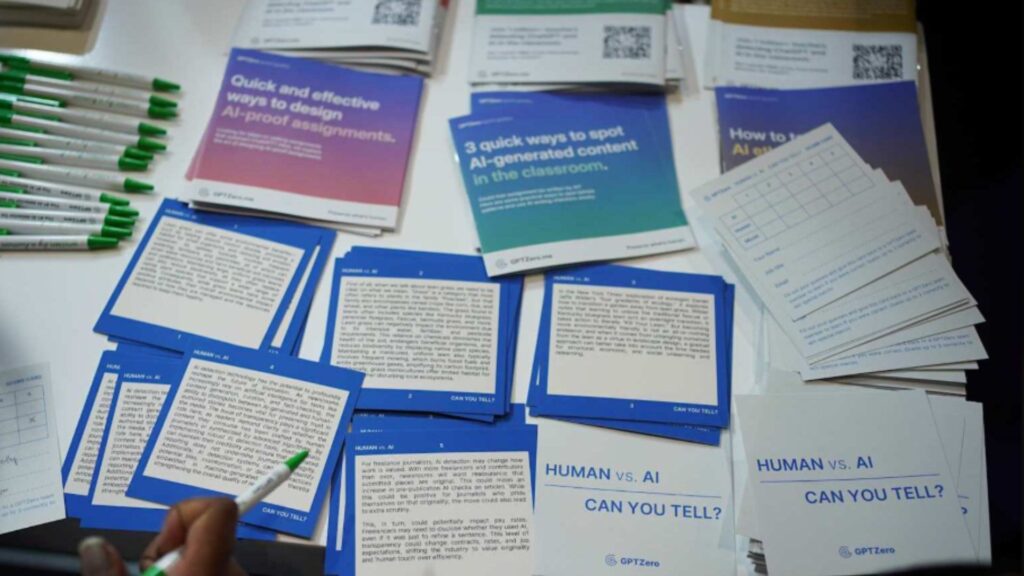
Artificial intelligence is fundamentally reshaping higher education, but the rapid transformation has triggered serious concerns about academic integrity, critical thinking skills, and the very purpose of university education. Recent research reveals a complex landscape where technological advancement collides with fundamental questions about learning and assessment in an AI-dominated world.
Dramatic Increase in Student AI Adoption
University students across the UK are embracing AI tools at unprecedented rates. According to the Higher Education Policy Institute, 92% of students were actively using AI in 2025—a dramatic surge from 66% in 2024. Of these users, 88% have employed generative AI to complete assignments, explain complex concepts, summarize academic articles, and generate text directly integrated into their coursework submissions (The Guardian).
The scale and speed of adoption has caught many educators off guard. What began as experimental use of ChatGPT and similar tools has evolved into systematic integration across virtually every academic discipline, from literature and history to business studies and scientific research.
Quality and Accuracy Concerns Mount
The concerns extend far beyond traditional cheating accusations. Professors Leo McCann and Simon Sweeney from the University of York highlight in their recent Guardian analysis that inappropriate AI use among students has become pervasive, with many assessments being “funneled through ChatGPT” without proper oversight or critical evaluation.
They observed that AI-generated responses to academic assignments are frequently “generic, uninspired, and often factually incorrect.” In one particularly telling example, students analyzing a 1922 article by Henry Ford—the controversial industrialist known for his anti-Semitic views and harsh labor practices—described him as creating “a sophisticated HR performance function” and characterized him as “a transformational leader,” demonstrating AI’s tendency to sanitize historical figures and contexts.
Detection Software Proves Unreliable
Universities have scrambled to implement AI detection tools, but these systems have proven deeply problematic. Detection software demonstrates high error rates, leading to false accusations against honest students and creating a climate of suspicion that undermines trust between educators and learners (MIT Sloan EdTech).
The situation became so severe that more than 1,000 people signed a petition calling for the University at Buffalo to disable its AI detection service after multiple graduate students were wrongly accused of academic misconduct. Similar controversies have erupted at institutions worldwide, highlighting the fundamental unreliability of automated detection systems.
The “Wicked Problem” of Assessment Design
Recent research involving 20 university educators found that attempts to make assessments more AI-resistant often compromise core educational objectives (The Conversation). As one educator noted in the study, “We can make assessments more resistant to AI, but if we make them too inflexible, we merely test adherence rather than creativity.”
This represents what researchers call a “wicked problem”—one without clear solutions that doesn’t fit traditional problem-solving frameworks. Traditional assessment methods like essays, research papers, and analytical assignments have become vulnerable to AI assistance, yet alternatives often fail to measure the critical thinking skills universities aim to develop.
Skills Relevance in an AI World
Some experts argue that widespread student AI adoption reflects a deeper issue: students intuitively recognize when they’re being asked to develop skills that may become obsolete. According to the World Economic Forum’s Future of Jobs Report 2025, routine reading, writing, and mathematical operations—skills that AI increasingly handles with competence—are becoming less essential in many professional contexts (IMD).
This perspective suggests students may be turning to AI not from laziness or dishonesty, but because they perceive a disconnect between traditional academic exercises and the skills they’ll need in their future careers. The challenge becomes distinguishing between legitimate skill development and academic shortcuts.
Institutional Responses and Policy Evolution
Educators are responding with diverse strategies, ranging from prohibition to integration. Some institutions have abandoned assignments particularly vulnerable to AI assistance in favor of more creative, personalized tasks that require original thinking and personal reflection. Others advocate for transparent AI integration, treating these tools as learning aids rather than threats to academic integrity.
MIT and other leading institutions have issued guidance specifically warning against over-reliance on AI detection software, recommending instead that educators focus on designing assessments that naturally resist AI assistance while promoting genuine learning outcomes.
The Path Forward: Integration vs. Resistance
The debate reflects broader questions about education’s role in an AI-dominated world. While some educators fear AI will “stunt growth” in both students and critical thinking development, others argue for embracing the technology as an inevitable component of future workplace environments.
Progressive institutions are exploring hybrid approaches that teach students to use AI responsibly while maintaining emphasis on uniquely human skills like creativity, ethical reasoning, and complex problem-solving. This includes explicitly teaching AI literacy—helping students understand both the capabilities and limitations of these tools.
Preserving Human-Centered Learning
As McCann and Sweeney conclude in their Guardian analysis, understanding AI’s implications for work, education, and daily life requires “a more critical perspective rather than an overly celebratory one.” The challenge for higher education lies in finding ways to harness AI’s legitimate benefits while preserving the deep thinking, critical analysis, and intellectual development that remain uniquely human contributions to knowledge and society.
The resolution of this crisis will likely require fundamental rethinking of assessment methods, learning objectives, and the very definition of academic achievement in an age where artificial intelligence can generate human-like responses to traditional educational tasks. The stakes extend beyond individual institutions—they encompass the future of human intellectual development and the role of education in preparing students for a world where the boundaries between human and artificial intelligence continue to blur.












